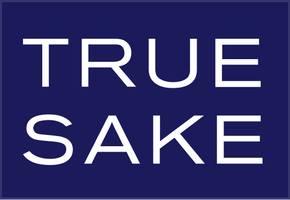Introduction
There is much mystery and myth about sake, but here you can learn the real deal about this liberating libation. That is why we focus on the education of the art form known as sake.
We understand that most people have only experienced hot sake as an accompaniment to sushi, but you don't have to go to Japan to become a bona fide sake connoisseur!
Like wine, there are categories of sake. But instead of breaking out in terms of different varietals of grapes such as Chardonnay or Cabernet, sake is broken down in terms of how much each grain of sake brewing rice is milled. Thus, categories of sake are established by polishing/milling percentages irrespective of the rice varietal.

Never mind that there are roughly over 100 different sake brewing rice types including the very famous Yamadanishiki, Gohyakumangoku, Miyamanishiki, and Omachi. Instead, think in terms of how much each grain of rice is removed from the outside husk in the attempt to get at the starchy core inside of each grain the brewing rice.
Likewise, there is a practice in Japan that calls for the adding of small amounts of distilled alcohol to the brewing process, which amongst other results brings out different flavors, aromas, and textures in the sake. The reasons for this are purely up to the breweries' desires and discretion, and these types of sake create new categories also based on milling percentages.
Junmai
One of the most important terms in the sake lexicon is the word Junmai. Historically, it was a milling percentage of rice of 70% remaining with 30% being milled away. This percentage has now changed and can be anything as long as it's displayed on the sake label. But Junmai also means the absence of any distilled alcohol. Thus when you see the word Junmai Ginjo you will deduce that this sake is made from rice and water only and has been polished 60%.
And in case you are wondering, there is very little chance that you could differentiate between a sake that has a bit of distilled alcohol in it and one that does not. Some purists argue against added alcohol. But we say sake is a different thing to different people, and there is no right or wrong.
Seimaibuai
The Japanese word Seimaibuai (say-my-boo-eye) is the most poignant word that you will need to know to order your sake by grade and category. Seimaibuai is the actual term for how much a grain of brewing rice is polished or milled. For example a

Seimaibuai of 50% means that each grain of rice that makes up that particular sake has been milled or polished 50% leaving a remaining value of 50% (Daiginjo grade sake). Likewise a sake that has a value of 60% means that each grain of rice was polished or milled 40% and this constitutes a Ginjo grade sake.
So when connecting the two key words Junmai and Seimaibuai, you will be able to distinguish the various commonly accepted grades of sake: Junmai meaning the absence of distilled alcohol, and Seimaibuai meaning the milling value for each sake. It is far easier than all this verbiage leads one to believe.
Sake Types -->
Tasting Tips -->
